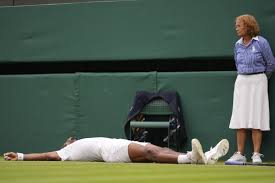
Introduction
The Wimbledon Championships, known for their rich tradition and thrilling tennis matches, rely heavily on the accuracy and precision of line judges. These officials play a crucial role in maintaining the integrity of the game, ensuring that line calls are made with the utmost clarity, allowing players to focus solely on their performance. Understanding the responsibilities and recent changes surrounding line judges enhances the appreciation for every match played on the hallowed grass courts of Wimbledon.
The Role of Line Judges
Line judges are tasked with making critical decisions during matches, including calling balls in or out and signalling faults. In recent years, the role of technology has transformed how these calls are made. While traditional officials still line the court, the introduction of the hawkeye system—a sophisticated technology that precisely tracks ball trajectories—has provided an additional layer of accuracy. This year, in a move to further ensure fair play, Wimbledon has streamlined the usage of hawkeye, allowing for quicker reviews of controversial calls while still retaining the expertise of human judges.
Recent Developments
The 2023 Wimbledon Championships saw significant adjustments in the operations of line judges. In response to player feedback and the growing reliance on technology, the tournament adopted a hybrid system where line judges’ calls would be cross-referenced more frequently with hawkeye reviews. This decision comes after the 2022 controversy surrounding several critical calls that could have altered the match outcomes. Referees have been trained to facilitate a seamless integration of human and electronic judgement, aiming to reduce disputes and enhance the players’ focus on their games rather than on line disputes.
The Importance of Human Officials
Despite advancements in technology, the importance of line judges remains paramount. Their expertise in predicting the ball’s placement, especially during high-stakes points, adds a unique human element to the sport. Critics of full automation argue that technology, while precise, lacks the intuition and experience that line judges bring to the court. Wimbledon’s commitment to retaining line judges acknowledges the significance of human judgement in a sport rich in history.
Conclusion
As tennis continues to evolve, the balance between human oversight and technological advancements will likely shape the future of officiating in tournaments like Wimbledon. The role of line judges at Wimbledon is vital—not just for making calls but for upholding the spirit of the game. This year’s modifications show a clear initiative to enhance the sporting experience, minimizing errors, and maximizing fairness. As the tournament progresses, the eyes of the tennis world remain on both the players and the officials, emphasising how every point counts in this prestigious competition.
You may also like

Abhishek Sharma: The Next Big Thing in Indian Cricket

The Rise of Donovan Ferreira in Professional Golf
